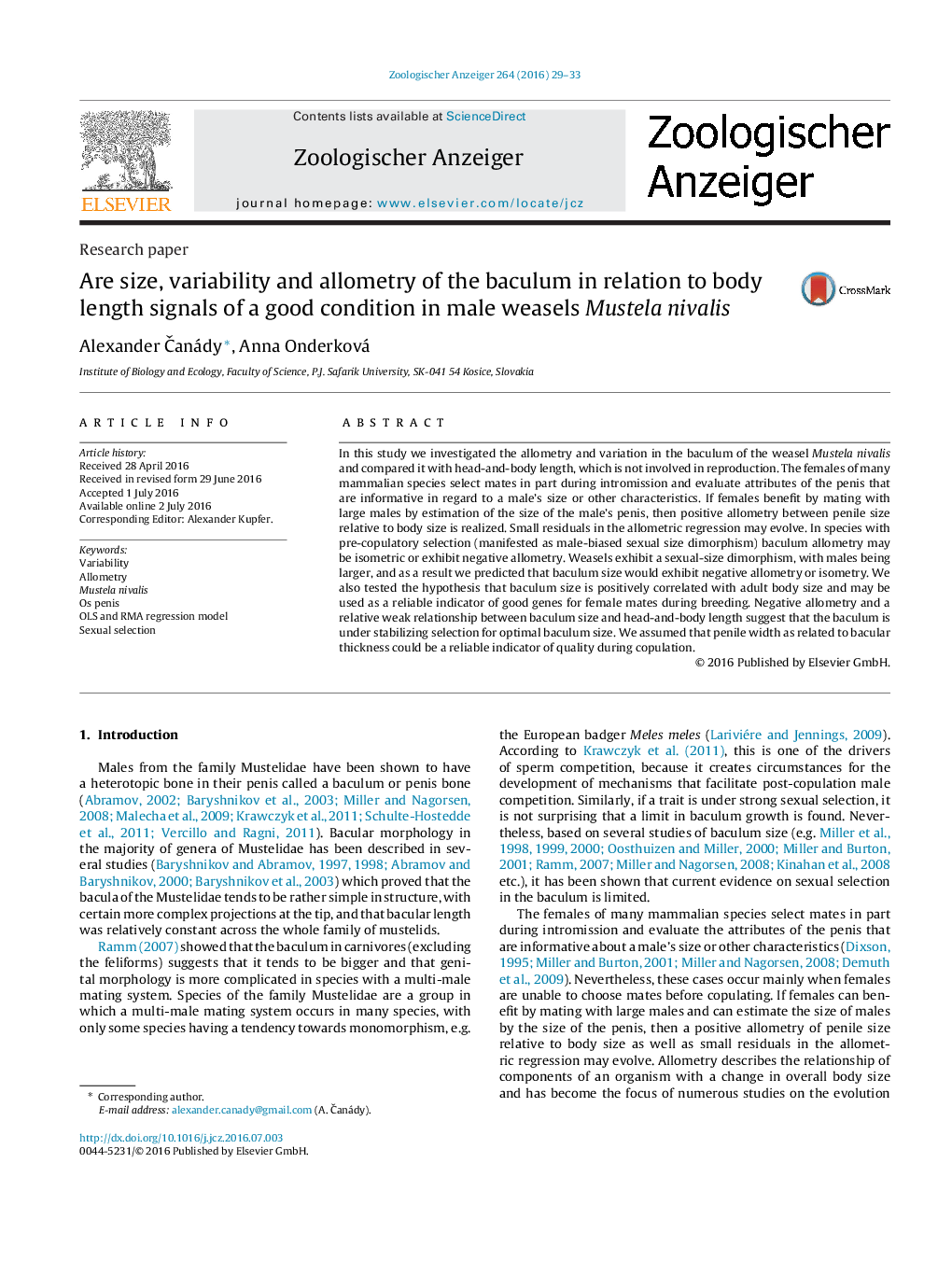| کد مقاله | کد نشریه | سال انتشار | مقاله انگلیسی | نسخه تمام متن |
|---|---|---|---|---|
| 2790443 | 1568611 | 2016 | 5 صفحه PDF | دانلود رایگان |
In this study we investigated the allometry and variation in the baculum of the weasel Mustela nivalis and compared it with head-and-body length, which is not involved in reproduction. The females of many mammalian species select mates in part during intromission and evaluate attributes of the penis that are informative in regard to a male’s size or other characteristics. If females benefit by mating with large males by estimation of the size of the male's penis, then positive allometry between penile size relative to body size is realized. Small residuals in the allometric regression may evolve. In species with pre-copulatory selection (manifested as male-biased sexual size dimorphism) baculum allometry may be isometric or exhibit negative allometry. Weasels exhibit a sexual-size dimorphism, with males being larger, and as a result we predicted that baculum size would exhibit negative allometry or isometry. We also tested the hypothesis that baculum size is positively correlated with adult body size and may be used as a reliable indicator of good genes for female mates during breeding. Negative allometry and a relative weak relationship between baculum size and head-and-body length suggest that the baculum is under stabilizing selection for optimal baculum size. We assumed that penile width as related to bacular thickness could be a reliable indicator of quality during copulation.
Journal: Zoologischer Anzeiger - A Journal of Comparative Zoology - Volume 264, September 2016, Pages 29–33
